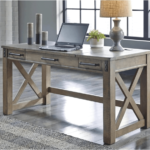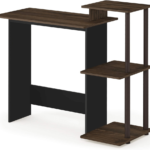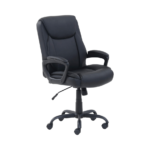As the popularity of remote work continues to rise, having a comfortable and supportive chair for your office space has become more important than ever.
When it comes to selecting the perfect chair, you may find yourself comparing drafting chairs and office chairs.
Both options offer unique features and benefits that cater to different needs and preferences.
In this comprehensive guide, we will explore the differences between drafting chairs and office chairs, helping you make an informed decision on which type of chair is best suited for your workspace.
Understanding Drafting Chairs

A drafting chair is essentially an ergonomic office chair with additional features tailored to specific professions, such as architecture and design.
These chairs are designed to provide comfort and support during long hours of sitting, making them ideal for individuals who require precise and detailed work at a desk.
Ergonomics and Adjustability
One of the key features of a drafting chair is its superior ergonomics. Just like office chairs, drafting chairs prioritize adjustable controls to ensure optimal postural health.
These chairs typically offer a wide range of adjustability options, including adjustable seat heights, seat depths, armrests, and backrests.
Some drafting chairs even come with dedicated and adjustable footrests, allowing users to maintain a neutral posture while working.
Reinforced Cylinders for Stability
To accommodate the needs of professionals who spend extended periods working at drafting desks, most drafting chairs are equipped with reinforced pneumatic cylinders.
These cylinders prevent the seat from sinking during use, ensuring that users can maintain their position and focus on their work without any interruptions.
Additional Features for Professional Use
Drafting chairs often come with additional features that cater specifically to the needs of professionals in fields like architecture and design.
These features may include reinforced casters with locking mechanisms to prevent the chair from sliding, adjustable footrests for added comfort, and backrests designed to provide optimal lumbar support.
The goal of a drafting chair is to seamlessly integrate into the work process, allowing professionals to concentrate on their tasks without any distractions.
Cost Considerations
It’s worth noting that drafting chairs tend to be more expensive than regular office chairs.
This is due to the added features and specialized design that caters to specific professional needs.
However, it’s important to remember that any office chair can potentially function as a drafting chair, depending on personal preferences and the specific features required.
It’s recommended to try out different options in a showroom before making a purchase to ensure that the chair meets your specific needs.
Exploring Office Chairs

Office chairs, on the other hand, are designed to cater to a wider range of professions and work environments.
These chairs are versatile and offer a variety of styles, features, and price points to suit individual preferences and budgets.
Let’s take a closer look at what sets office chairs apart from drafting chairs.
Customization and Adjustability
When it comes to office chairs, customization, and adjustability are key factors to consider.
These chairs are designed to fit a wide range of body dimensions, ensuring maximum comfort and safety during prolonged sitting.
Office chairs typically offer adjustable lumbar support, allowing users to maintain proper posture and prevent back discomfort.
Additionally, office chairs often have tilt and swivel capabilities, allowing users to adjust the chair to their preferred position and movement.
Versatility for Different Work Environments
Unlike drafting chairs, which are tailored to specific professions, office chairs are suitable for a variety of work environments and tasks.
Whether you’re working in a traditional office setting, a home office, or a co-working space, you can find an office chair that meets your specific needs.
These chairs come in various styles, materials, and designs, allowing you to choose one that complements your workspace aesthetic while providing the necessary comfort and support.
Durability and Quality
Office chairs are known for their durability and long-lasting quality.
Investing in a high-quality office chair can significantly contribute to your overall work experience, as it ensures that the chair will withstand daily use and provide the necessary support for an extended period.
While office chairs may come at a higher price point compared to budget options, the investment is often worth it in terms of comfort, longevity, and improved productivity.
Considerations for Standing Desks
If you’re considering using a standing desk, it’s important to choose a chair that complements this setup.
Drafting chairs can be a great option for standing desks, as their adjustable height allows users to find the perfect balance between sitting and standing.
However, it’s essential to ensure that the drafting chair aligns with the height of your standing desk and provides adequate support for both sitting and leaning forward.
Making the Right Choice for Your Workspace

When deciding between a drafting chair and an office chair, it’s crucial to consider your specific needs, work environment, and personal preferences.
Here are some key factors to keep in mind:
- Profession and Work Tasks: If you work in a field that requires precise and detailed work at a drafting desk, a drafting chair may be the better option. However, if your work involves a wider range of tasks and environments, an office chair offers greater versatility.
- Ergonomic Requirements: Consider your posture and any specific ergonomic needs you may have. If lumbar support and adjustable features are a priority, an office chair may be the more suitable choice.
- Budget: Drafting chairs can be more expensive due to their specialized features. If budget is a concern, explore different office chair options that offer the necessary comfort and adjustability within your price range.
- Workspace Setup: Take into account the height and dimensions of your desk or work surface. Ensure that the chair you choose is compatible with your workspace setup and allows for proper alignment and comfort.
- Personal Comfort: Ultimately, the most important factor is your personal comfort and preference. Test out different chairs, consider your body dimensions, and choose a chair that feels comfortable and supportive for long periods of sitting.
Remember, finding the right chair for your workspace is an investment in your comfort, productivity, and overall well-being.
Take the time to research and test out different options to ensure that you select a chair that meets your specific needs and enhances your work experience.
Frequently Asked Questions: Drafting Chair vs Office Chair
What is the difference between a drafting chair and an office chair?
While both drafting chairs and office chairs are designed for use in work environments, they differ in their features and functionality.
A drafting chair is specifically designed for tasks that require working at elevated surfaces like drafting tables or standing desks, whereas an office chair is intended for use at a standard desk or workstation.
What are the main features of a drafting chair?
Drafting chairs typically have a taller height range compared to office chairs, allowing users to comfortably reach higher surfaces.
They often come with a footrest or a height-adjustable foot ring to provide support while working at elevated positions.
Additionally, drafting chairs generally have a taller backrest and offer increased lumbar support to accommodate the upright posture required for drafting or drawing tasks.
What are the main features of an office chair?
Office chairs are designed for use at regular desks or workstations.
They typically have a lower height range compared to drafting chairs, allowing users to sit at a standard desk height comfortably.
Office chairs often feature a swivel base and casters for easy maneuverability within an office environment.
They also come with adjustable features such as seat height, armrest height, and tilt mechanism to provide customizable comfort and support throughout the day.
Can I use a drafting chair as an office chair?
While it is possible to use a drafting chair as an office chair, it may not provide the optimal ergonomic support for standard desk-based work.
Drafting chairs are specifically designed for elevated work surfaces and may lack certain features, such as a proper recline or armrest height adjustment, that are commonly found in office chairs.
If you primarily work at a regular desk, an office chair would be a more suitable choice for long-term comfort and support.
Can I use an office chair as a drafting chair?
In most cases, an office chair would not be ideal for use as a drafting chair.
The lower height range of an office chair may not allow you to reach comfortably when working at an elevated surface like a drafting table or standing desk.
Additionally, office chairs may not provide the necessary lumbar support and footrest features required for drafting or drawing tasks.
If you frequently engage in drafting work, it is recommended to use a chair specifically designed for that purpose.
Are drafting chairs more expensive than office chairs?
The cost of drafting chairs and office chairs can vary depending on factors such as brand, materials, features, and overall quality.
Generally, high-quality ergonomic office chairs can be quite expensive due to their advanced features and durability.
On the other hand, drafting chairs, especially basic models, can be more affordable.
However, there are also premium drafting chairs available with additional features that can be more expensive than standard office chairs.
It’s important to consider your specific needs and budget when choosing between the two.
Which chair is better for back support, a drafting chair, or an office chair?
Both drafting chairs and office chairs can offer adequate back support, but the level of support may differ based on the design and features of the chair.
Many office chairs are specifically engineered with ergonomic features to promote proper posture and provide lumbar support.
However, some drafting chairs may have taller backrests and extra lumbar support to accommodate the upright posture required for drafting tasks.
It is recommended to choose a chair that has adjustable lumbar support and allows you to maintain a neutral spine position for optimal back support.
Can I use a drafting chair or an office chair for extended periods?
Both drafting chairs and office chairs can be used for extended periods, but it is crucial to prioritize ergonomic comfort and support to minimize the risk of discomfort or musculoskeletal issues.
Look for chairs that offer adjustable features, such as seat height, lumbar support, and armrest height, allowing you to customize your sitting position for maximum comfort.
Additionally, taking regular breaks to stretch, change positions, and engage in light physical activity can help reduce the strain on your body during prolonged periods of sitting.
Conclusion
Choosing between a drafting chair and an office chair can be a decision that significantly impacts your work experience.
Both options offer unique features and benefits, catering to different professions, tasks, and work environments.
Understanding the differences, such as height adjustability, ergonomic features, and versatility, will help you make an informed decision.
Consider your specific needs, preferences, and budget to select the chair that provides optimal comfort, support, and productivity for your workspace.
With the right chair, you can create an environment that promotes good posture, reduces discomfort, and enhances your overall work performance.





